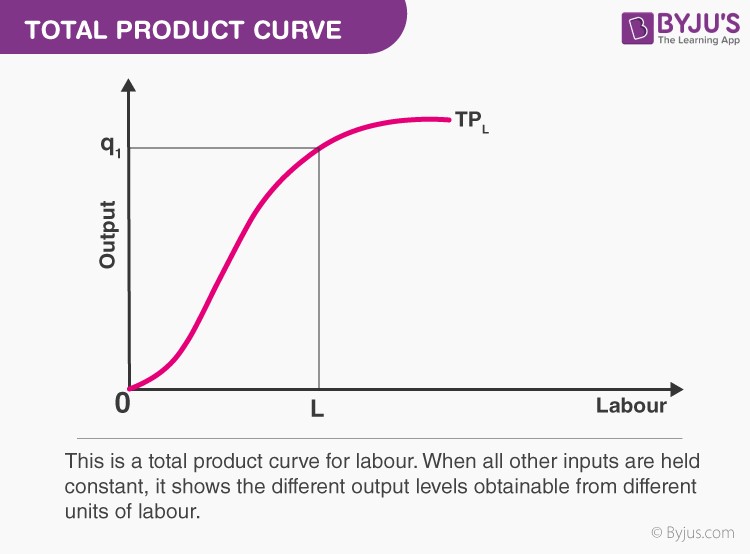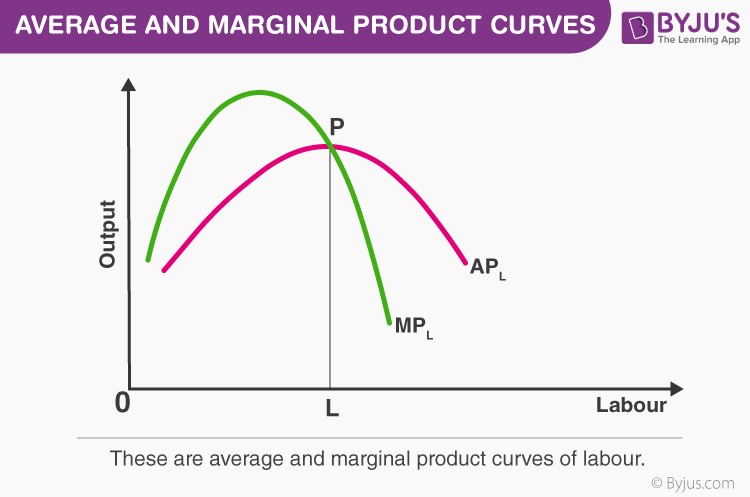The shape of the total product curve is a function of specialisation, teamwork, and utilising the variable input with the fixed inputs. The TP (total product) curve represents the total amount of output (end result) that an enterprise can manufacture within a provided amount of labour. As and when the amount of labour changes, the total output changes.

We quantify the units of labour along with the horizontal axis and the output (end result) along with the vertical axis. With L quantities of labour, the enterprise can manufacture q1 quantities of output.
According to the law of variable proportions, the marginal product of an input increases initially. After a definite level (degree) of employment, it starts decreasing.
Hence, the MP curve looks like a reverse U-shaped curve in the average and marginal product curves. Now, let us see what the AP curve appears to be. For the first unit of the variable input, one can easily have a look at it and come to the conclusion that both MP and AP are alike. Now, as we increase the amount of input, MP increases.
Since AP is the aggregate of marginal products, it also increases. However, it is less than MP. After a point, MP starts decreasing. As long as the value of MP is greater than the value of AP, AP continues to increase. Once MP decreases sufficiently, its value becomes less than AP. Thus, AP also starts decreasing. The AP curve is also reverse U-shaped.

This is detailed and elucidated information about the concept of the shapes of total product, marginal product, and average product curves. To learn more, stay tuned to our website.

Comments